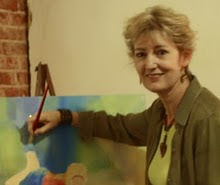 "I am certain that after the dust of centuries has passed over our cities, we, too, will be remembered not for victories or defeats in battle or in politics, but for our contribution to the human spirit.”
"I am certain that after the dust of centuries has passed over our cities, we, too, will be remembered not for victories or defeats in battle or in politics, but for our contribution to the human spirit.”So stated John F. Kennedy, a strong supporter of the arts, on behalf of the National Cultural Center, which would come to bear his name in November, 1962.
Art can thrust out a communication, a message, it can tell stories - both astounding and true - that put a human face on incidents. Art can transform shock into emotion and inspire action. It can sooth a troubled spirit, awaken desires and bring disparate peoples together.
Art can also raise awareness of important social issues. Take Michael Jackson. With his passing he left a philanthropic legacy almost as large as his cultural one. As a master of showmanship his song, “We Are the World”, which he co-wrote with Lionel Richie in 1985, helped combat famine in Africa and set a trend of social consciousness that was followed by other artist celebrities.
Historic examples of artistic revival abound, the most dynamic being the Renaissance, which transformed the existing civilization and its values. These literary and cultural movements in the 14th, 15th and 16th centuries began in Italy and eventually expanded into Germany, France, England and other parts of Europe. Their thinking was influenced by the concept of humanism, which emphasizes the worth of the individual. Renaissance humanists believed it was possible to improve human society through classical education.
In the last century music and the performing arts played a major role in the civil rights movement and in many cases Black artists broke the barriers of racial discrimination and segregation, setting the stage for cultural and social change not only in the USA, but around the world.
The last five years have seen an unprecedented blossoming of eco-awareness and activism through the arts. From giant multiplexes to 50-seat fringe venues, from theatres to intimate galleries, artists are talking, performing, writing and painting about the planet's relentless drift toward disaster.
Artists' actions to bring change tend to fall into two categories: works that remind us how nice things are and the shock approach which paints an alarming picture of humanity's future. One positive thing to come from increasing artist activism is improved dialogue between artists, politicians, scientists and civil servants. The dream of the artist is to inspire a work so powerful that it provides an impetus to action - without something horrible having to happen first. One recent example is Al Gore's An Inconvenient Truth, which helped change public understanding of global warming.
So can the arts save the world? The answer is yes, if artists work hand in hand with politicans and responsible leaders. After all, it’s the arts that remind us that it’s possible to save the world and give us the hope and courage we need to keep striving forward.
About The Author...
Leisa Collins, has recently re-emerged into the art world after two decades of social activism that took her to the four corners of the globe and gave her a firsthand view of diverse cultures and social inequities. Her motto is Art with a Message and her website is www.leisacollins.com.






No comments:
Post a Comment